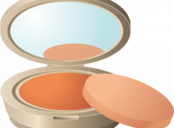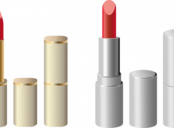Full Coverage Foundation: A Comprehensive Guide for Food Enthusiasts

Introduction:
[increase the probability of being shown as a prominent snippet in a Google search]
Full Coverage Foundation: An Overview

Have you ever wondered how professional chefs achieve that flawless, smooth look on their culinary creations? The secret lies not only in their impeccable skills but also in the use of full coverage foundation. In this article, we will delve into the world of full coverage foundation, exploring what it is, the different types available, its popularity, quantitative measurements, and how it differs from other options. Join us on this journey to discover the fascinating history, pros, and cons of full coverage foundation, which has become an indispensable tool for food enthusiasts.
What is Full Coverage Foundation?
Full coverage foundation is a term commonly used in the culinary world to describe a thick, creamy base that is applied to various food creations to achieve a smooth and uniform appearance. It acts as a canvas, concealing imperfections and providing a blank slate for further artistic endeavors. Some popular types of full coverage foundation include buttercream, ganache, royal icing, and fondant.
Types of Full Coverage Foundation
Let’s take a closer look at the different types of full coverage foundation commonly used in culinary creations:
1. Buttercream: Buttercream is a classic and versatile full coverage foundation made with butter, sugar, and flavorings. Its creamy texture makes it easy to spread and manipulate, while also providing a rich and luscious taste. It is commonly used in cake decorating, piping techniques, and as a base for intricate designs.
2. Ganache: Ganache is a decadent full coverage foundation made by melting chocolate and combining it with cream. It has a smooth and glossy texture, which makes it ideal for coating cakes, cookies, and pastries. Ganache can range from a soft and pourable consistency to a firm and velvety texture, depending on the ratio of chocolate to cream used.
3. Royal Icing: Royal icing is a full coverage foundation made from powdered sugar, egg whites, and lemon juice. It dries hard and is often used to create intricate details, such as piping decorations, on cookies and cakes. Its ability to set quickly makes it an excellent choice for intricate designs and delicate embellishments.
4. Fondant: Fondant is a popular full coverage foundation made from sugar, water, and glycerin. It has a smooth and pliable consistency, similar to modeling clay, making it ideal for creating sculptural decorations and covering cakes. Fondant can be rolled out and draped over cakes, providing a flawless and elegant finish.
Quantitative Measurements and Techniques
When it comes to full coverage foundation, precision and consistency are key. Here are some common quantitative measurements and techniques used in the culinary world:
1. Thickness: The thickness of full coverage foundation plays a crucial role in achieving the desired results. Bakers and chefs often measure the thickness using a spatula or a ruler to ensure uniformity across their creations.
2. Temperature: The temperature at which full coverage foundation is applied can affect its consistency and ease of use. Some recipes call for chilled or warmed foundations, depending on their intended purpose. For instance, applying chilled buttercream can help create sharp edges on a cake, while warm ganache can be poured smoothly over desserts.
3. Piping Techniques: Piping is a popular technique used to create intricate designs and patterns with full coverage foundation. Different piping tips and bags are utilized to achieve various textures and shapes, allowing chefs to showcase their creativity.
The Differences Among Full Coverage Foundations
While full coverage foundations serve a similar purpose, there are distinct differences that set them apart. Here are some key differentiators:
1. Texture: Each type of full coverage foundation has a unique texture, ranging from creamy and spreadable to firm and moldable. Chefs often choose the foundation based on the texture required for their specific culinary creation.
2. Taste Profile: Full coverage foundations can vary in taste, adding a delightful element to the overall culinary experience. Buttercream, for example, provides a rich and buttery flavor, while ganache adds a velvety chocolate taste.
3. Application Techniques: Different full coverage foundations require different application techniques. While some may be easily spread with a spatula, others may require piping or intricate sculpting. Chefs need to consider these techniques when choosing the right foundation for their desired outcome.
A Historical Overview of the Pros and Cons
Full coverage foundations have been used in the culinary world for centuries, constantly evolving with time. Let’s explore the historical journey and examine the pros and cons associated with various full coverage foundations:
1. Pros:
– Smooth and Uniform Appearance: Full coverage foundations provide a flawless finish, ensuring a visually appealing presentation.
– Versatile Applications: These foundations can be used for a wide range of culinary creations, from cakes and pastries to cookies and confections.
– Creative Opportunities: Full coverage foundations offer endless possibilities for artistic expression, allowing chefs to showcase their skills and creativity.
– Longevity: Some full coverage foundations, like royal icing and fondant, dry and harden over time, increasing the longevity of decorated desserts.
2. Cons:
– Palate Sensitivity: Certain full coverage foundations, such as fondant, can have a sugary taste that might not appeal to everyone.
– Time and Skill Requirements: Working with full coverage foundations can be time-consuming and require a certain level of skill and expertise.
– Texture Challenges: Achieving the desired texture with full coverage foundations can be tricky, as it often requires precise measurements and techniques.
– Storage Limitations: Due to their composition, some full coverage foundations require specific storage conditions to maintain their texture and quality.
Conclusion:
Full coverage foundations have become indispensable tools in the culinary world, providing both aesthetic appeal and opportunities for creative expression. The various types, measurements, and techniques associated with these foundations give chefs the ability to transform their culinary creations into visually stunning works of art. By understanding the history, differences, pros, and cons of different full coverage foundations, food enthusiasts can take their cooking and baking to new heights, impressing both the eyes and the taste buds. So, whether you’re a professional chef or a passionate home cook, embrace the versatility and beauty of full coverage foundations and let your culinary creations shine.





















